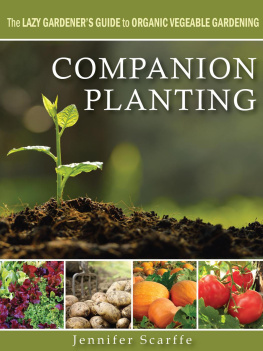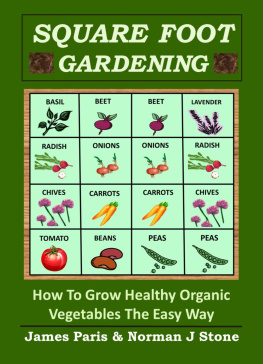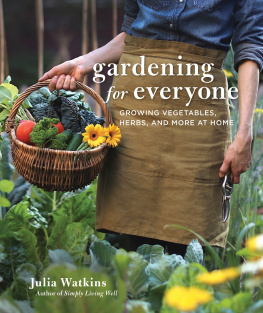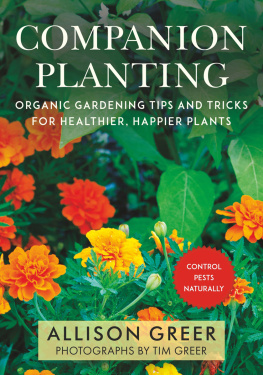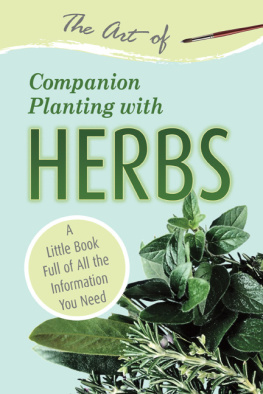Growing & Using Basil
by Ellen Ecker Ogden
Introduction
Basil is one of the most popular and widely grown herbs in the world, valued for both its culinary and aesthetic appeal. The aromatic cooking qualities of basil are often associated with Italian cooking, since the sweet basil that we are most familiar with combines so well with tomatoes and garlic. The origins of basil, however, are really based on the Far East: India, Pakistan, and Thailand.
The name Basil has two derivations. One is the Greek word basileus, or king. The other related root is basilisk, a legendary reptile who was so repulsive he could kill with just one glance. Both of these terms suggest the power and efficacy that ancient peoples ascribed to basil.
The powerful fragrance of basil has a history beyond the garden and the kitchen. Indian cultures value basil for religious ceremonies: A sprig of holy basil buried with the dead would offer protection from evil in the next world. In Italy, basil was once a traditional sign of love. A pot of basil placed on a balcony meant that a woman was ready for her suitor to arrive. And if he brought her a sprig of basil she would surely fall in love with him. Sidewalk cafs in France overflow with planters full of basil and ornamental flowers, making use of basils power as a natural insect repellent.
Basil has been enjoyed in American kitchen gardens for over 200 years. Abundant quantities of the herb were grown in the gardens at Mount Vernon and dried in the rafters of the kitchen. In climates not as conducive to air-drying herbs, basil was often preserved in layers of salt in earthenware crocks. And basil vinegar is as popular now as it was years ago, when vinegar was recognized as a natural preservative.
Sweet basil, with its wonderful aroma and flavor, enlivens many dishes, blending nicely with fish, poultry, beans, cheese, and eggs, as well as a wide range of vegetables. Basil even combines well with other herbs: oregano, sweet marjoram, thyme, and parsley. Its no wonder that basil is the cooks choice and a favorite culinary herb in todays kitchen.
Growing and Culture
Starting Seed
Start basil seed indoors four to five weeks before the last danger of frost. Fill pots or seed-starting trays with a moistened medium of potting soil, lightened with sand or vermiculite. Plant seeds a scant 1/8 inch deep. (A good rule of thumb is to plant any seed at three times the depth of its size.) Press the soil gently over the seeds, water lightly, then cover the containers with a clear plastic to prevent loss of moisture. Label the containers with the variety names and the date of sowing.
Place the containers in a warm spot, on top of the refrigerator, or in any place you might place bread to rise. Basil seed germinates best at temperatures around 75F. Germination will take up to one week.
Once the seedlings emerge, remove the plastic wrap. Move the plants to the brightest place you have or they will stretch for the light and become spindly and weak. Water the seedlings only as needed. The key is not to overwater, but to keep the soil moist. Basil prefers to dry out a little between waterings, but not to the point of wilting. Provide plenty of light and warmth until the seedlings are ready to be planted in the garden.
Basil is a tender perennial, grown as an annual because it is frost-sensitive. In fact, it is so sensitive to frost that it makes a good indicator plant for seeing which parts of your garden are the coldest. On an early fall night, when just a touch of frost settles into the paths between the beds, browned leaves nipped from the light frosting will give an accurate picture of your gardens cold spots.
Plant basil outdoors after all danger of frost it past. A protected area is best if your garden is prone to low temperatures. Cutworms can be deterred by sprinkling a circle of wood ashes around each new transplant. After the first two weeks, the plants should be established, and cutworms wont be able to hurt them.
Companion Planting
According to gardening lore and tradition, companion planting (planting certain plants next to each other in the garden) is one of the best ways to increase vigor and control insect damage. Basil is an especially valuable companion plant, partially due to its strong fragrance. Plant basil near tomatoes and peppers to repel insects; basil will increase the vigor of your asparagus, so plant some there, too. One source recommends that you liberally sprinkle seed around your manure pile or near your front door to repel flies and mosquitoes.
Plant basil in herb gardens, vegetable gardens, flower gardens, or containers. The plants provide an excellent edible landscape because of their striking foliage and beautiful blossoms. Attractive flowers to combine with sweet basil in containers include nasturtiums, zinnias, marigolds, or even other basils like the green and purple ruffles. Shorter, compact bush-type varieties like spicy globe or green bouquet make excellent formal edging plants. And scented basils can provide a range of sweet fragrances around a deck or sitting area.
Basil is very useful, so make sure you have enough for your needs: Six plants for pesto and tomato seasoning, plus at least two each of the purple and scented varieties for making vinegars and oils. And one plant each of the lettuce-leaf basils for summer salads and barbecue. Plan on a minimum of two of the bush basils for container growing throughout the year. Stagger your plantings for a continuous supply of fresh basil.
When grouping several basils together in one garden plot, keep in mind the height and space requirements of each to insure good growth and an attractive arrangement. For example, green and purple ruffles are bushy plants, 18 to 24 inches tall; fine green bush basil will grow 12 to 18 inches tall. In the bush-type family, however, there is a tiny, compact mounded basil called spicy globe that grows only 4 inches tall and would be best grown in front of the ruffles kinds in the garden border. The same is true for lemon-scented basil, which is a delicate plant and not a vigorous grower as compared to the cinnamon-scented variety. Allow a front row spot for lemon basil, next to some showy flowers to mask its narrow leaves. The list on page 30 should guide you at planting time.
Soil, Water, Light, and Temperature
Since basil is a leaf crop, it needs good, fertile soil. Dont overdo it, though. The flavor of herbs comes from their essential oils, and too much nitrogen will yield lush growth but a low oil content Soil pH necessary for good growth falls in the 6.4 to 7.0 range, the same as for corn or tomatoes. Well-rotted manure mixed into the soil before planting, or a feeding of fish emulsion and liquid kelp used as an organic fertilizer, helps to keep nutrient levels balanced and abundant.
Basil is a sun worshiper, and it grows best in the heat of the summer. Cold soil or air will cause basil to grow slowly. Basil requires at least six hours of full sun every day.
Drip irrigation is a better way to water basil than sprinklers, because cold water on the leaves of plants can cause black spots.
To keep a pot of basil for the winter, either take a cutting from a garden plant in late summer and root it in a slightly moist sterile potting medium, or sow a few seeds in pots during mid-summer to mature in the late fall. Dont expect the plants to put out much new growth during the dark days of winter without supplemental light. Some basils do better than others as indoor plants. The bush types with their tiny compact leaves and growth habit tend to endure the stress of indoor living better than other varieties.


